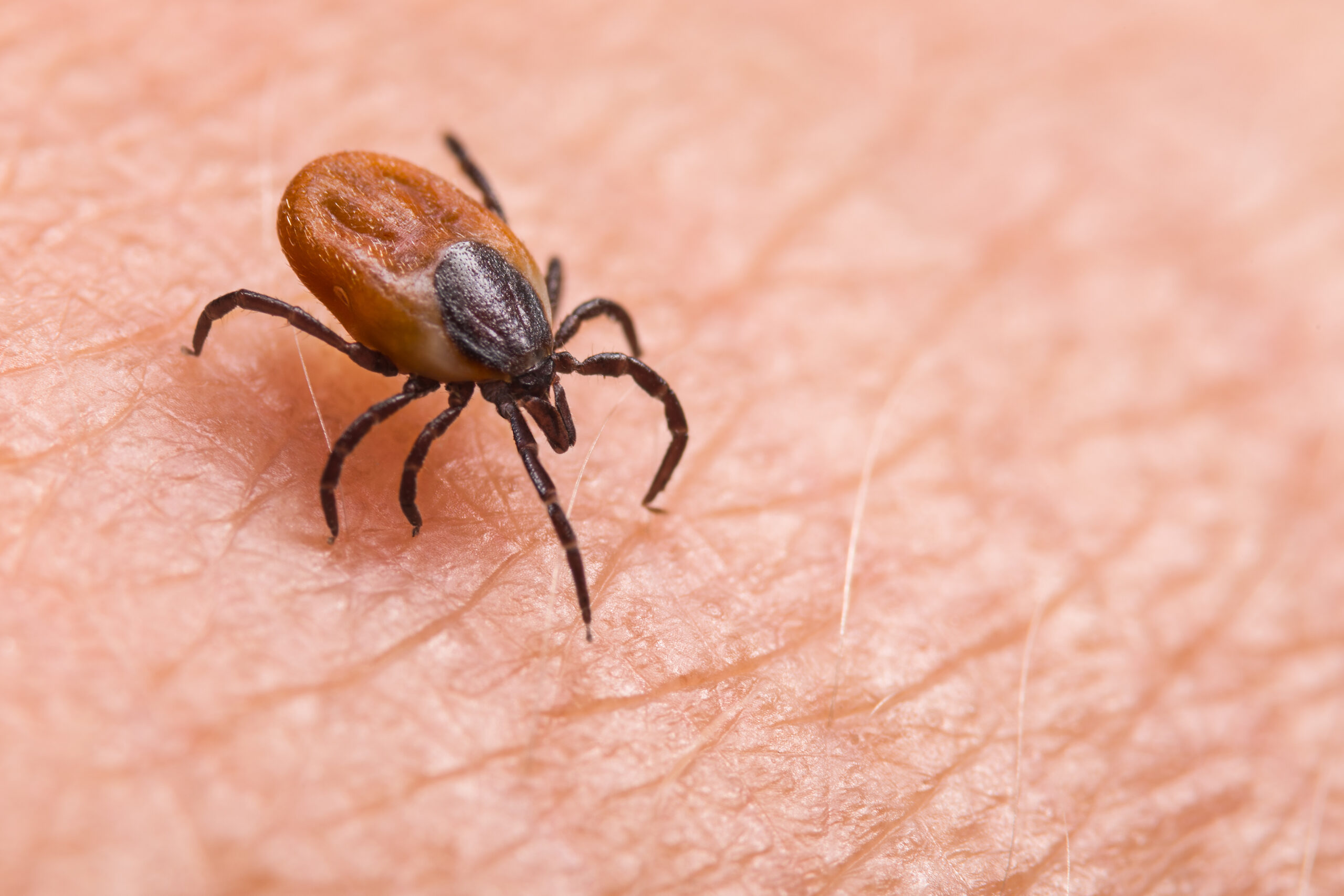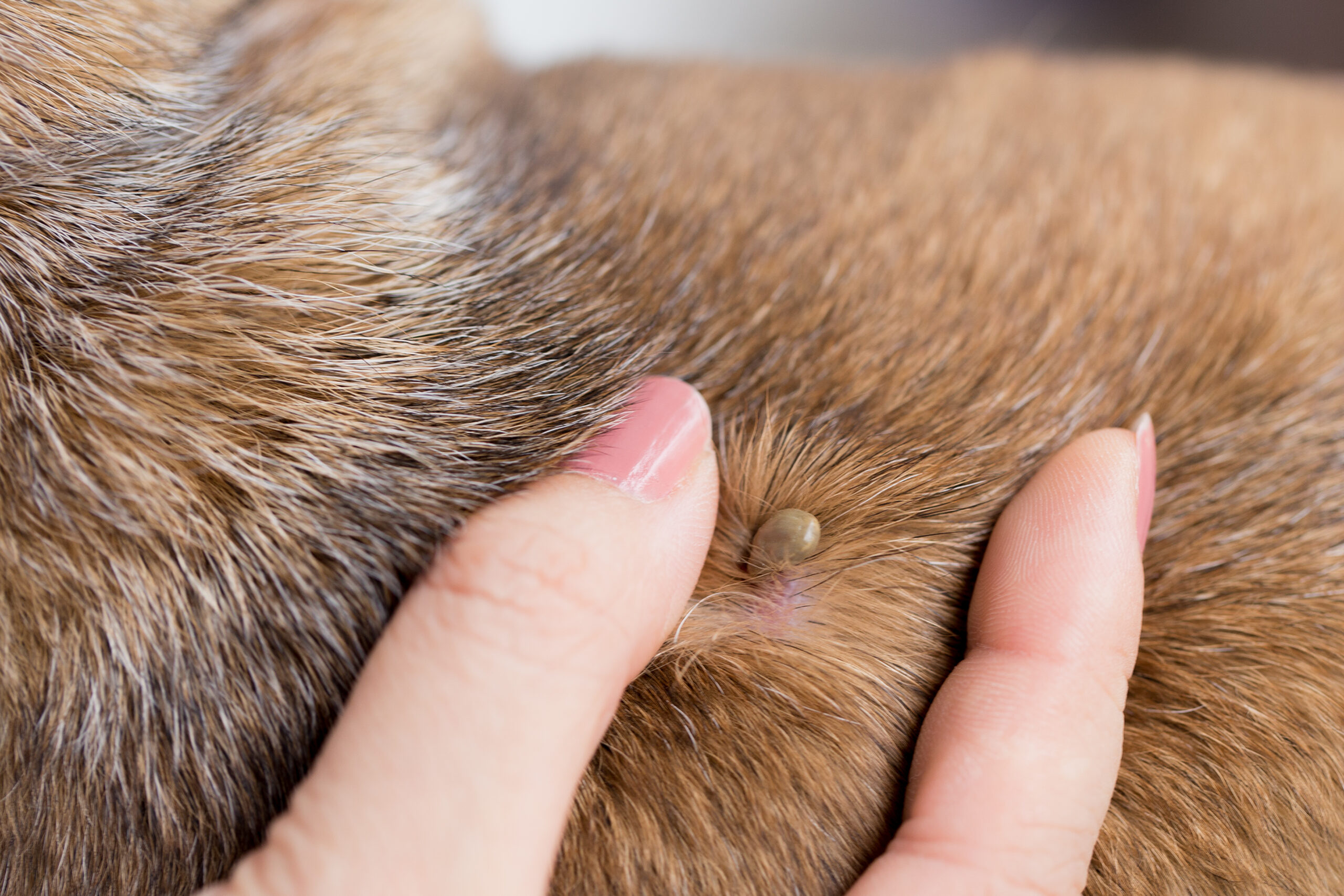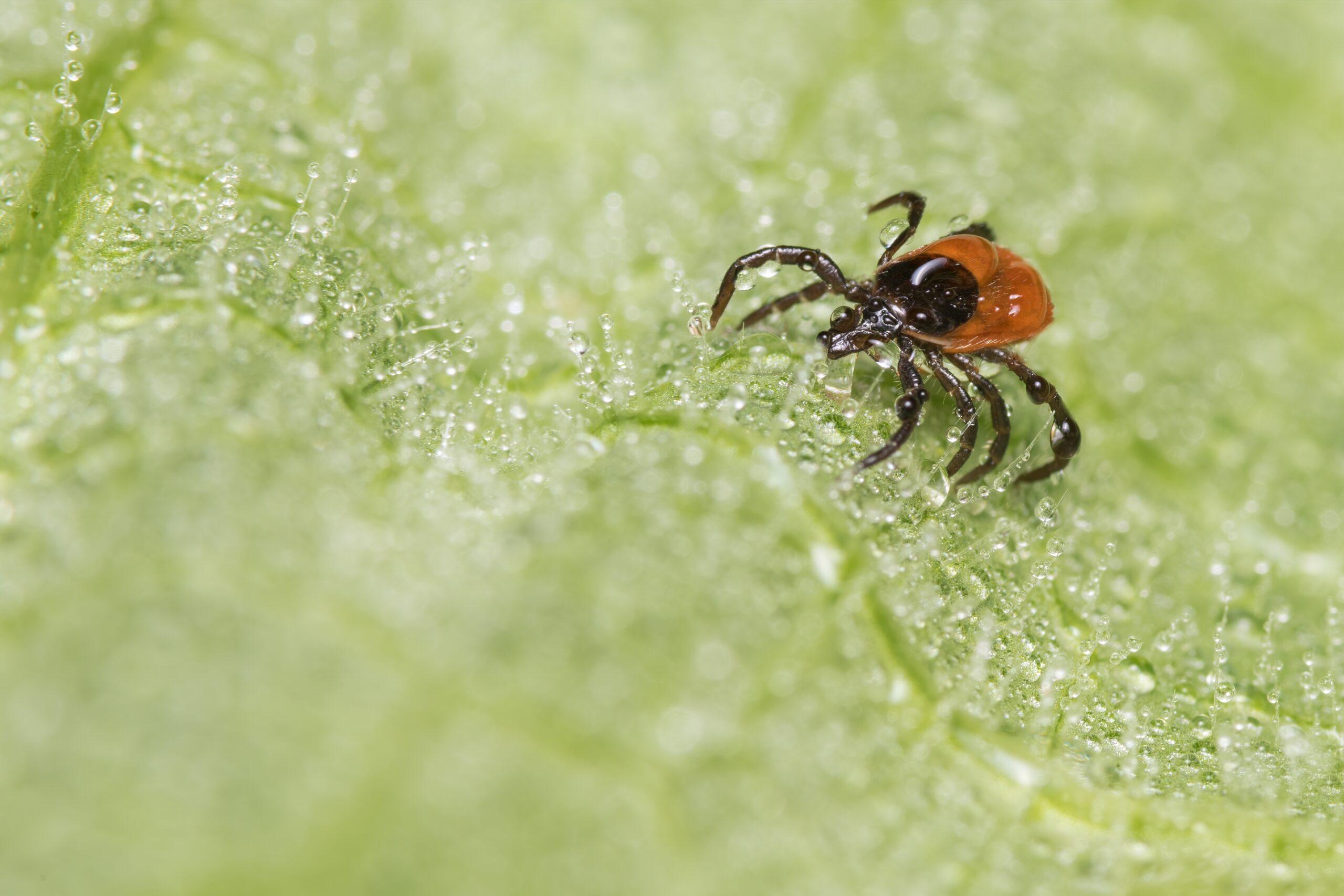The Key Tips to Removing Ticks
The Key Tips to Removing Ticks
Picture this: you go on a fun nature hike with your family and beloved dog, enjoying the sweeping views and the smell of fresh air tinged with the fragrance of trees and trodden-on dirt. You all complete the hike and make it to the tiny parking lot, when someone notices a strange bump on the back of someone else’s neck that wasn’t there before. Upon further inspection, everyone concludes that it is the worst and most common hiking souvenir: a tick! It is easy to panic at the thought of a bloodsucking – and potentially contaminated – insect living on a person or pet, but the most important thing to do in this scenario is to stay calm. It is perfectly common to remove a tick at home, especially for people who have a lot of property with thick brush and grass. It seems straightforward to remove a tick, but there are some important steps to keep in mind in order to keep the affected person and the designated tick-remover safe throughout the process. Let’s discuss some key tips for removing ticks from people and pets, as well as why ticks are such a feared pest in the first place.
Removing Ticks From People

First of all, it is crucial that any person involved in the tick removal process stays cool, calm, and collected. It will only make the situation worse if everyone is panicking and being erratic with their movements while trying to take an attached insect off of someone. In fact, it’s a great idea to quickly check everyone in your party after venturing into areas that commonly have a lot of ticks. Hiking and camping are two common activities that can result in tick bites since they often take place near their main habitats: thick brush, tall grass, and clustered trees. Check everyone’s exposed skin and any loose clothing for small ticks, and keep in mind that the younger ones can be the size of poppy seeds. If, unfortunately, someone does have a tick on their body, these are some key steps to safely removing the bloodsucker:
- Use clean tools: It is crucial to be sanitary in this process because it’s not worth it to risk an infection on top of the already-present dangers of a tick bite. The most important tool is a pair of fine tweezers that are completely sanitized. The finer and pointier that the tweezers are, the easier it will be to completely remove the tick. It is also helpful to have isopropyl alcohol nearby to sanitize the skin after removal. As a side note, make sure that the area in which you are removing the tick is sanitary and well-lit. The bathroom is the most popular place for this procedure because it is the most likely to be both of these things.
- Pull correctly: Believe it or not, there is a proper way to remove a tick from a person. If the remover is not precise and careful, the tick could stay attached enough to continue feeding. The most important points to remember are the direction and formula of the pull. Carefully grab the tick as close to the person’s skin as possible, and pull completely straight up. Do not twist at all, as this can cause the mouth to separate from the body. However, if this does happen, don’t panic; it is possible to separately remove the mouth with the same tweezers.
- Sanitize the skin: Once the tick is completely removed, it is crucial to sanitize the bite area just like any other bite or scrape. Clean the spot with your preferred antibiotic ointment or hydrogen peroxide, carefully using a cotton swab or cotton ball. Make sure the person allows the skin to heal over the next few days, and keep an eye on the area for any strange symptoms, such as excessive redness, itchiness, swelling, or burning. Finally, once the whole process is done, make sure to thoroughly wash your hands and sanitize the tools.
- Dispose of the tick: Since ticks would make awful pets, the next logical step is to properly dispose of it after removing it from the person. There are a variety of methods you can use, depending on what you have available. One of the most common ways is to place it in a plastic zip-top bag before throwing it away. Other options include flushing it down the toilet or drowning it in rubbing alcohol. Whatever method you choose, the only real requirement is that you do not squish the tick. This will release any blood and bacteria that is within it (gross!), so keep it in-tact while you dispose of the body.
- Monitor the person: This is mainly if the person actually lives with you, but if it is a friend or family member who doesn’t live in the same home as you, it is still a good idea to check in with them. When the tick is removed ASAP and does not have time to completely feed, there is very little risk of the person being infected. However, it is wise to keep an eye out for any adverse symptoms over the next several days. Some of the most prevalent ones to watch for are fever, rash, chills, aches, fatigue, and headaches. If the person starts showing any combination of these, seek medical attention immediately.
If you want to have extra protection from ticks while participating in outdoor activities, one of the most efficient ways is to use a good tick repellant. Make sure that the spray says it actually repels ticks and is EPA-approved since this means that it has been proven safe for humans and effective against ticks. Also, if it is not too hot outside, try wearing lightweight pants and a long sleeve shirt. This leaves less skin exposed for ticks to feed from, and therefore discourages them from latching on when you walk by. If you do happen to pick up a tick, it is not necessarily a sign that you are immediately infected with anything, but more on that later.
Removing Ticks From Pets

Our furry friends can be even more at risk of hosting a tick, mainly because of their fur that provides added protection for the tick. If your dog or cat spends most of its time outdoors, checking them for ticks is a great habit to get into as a pet owner. Run your fingers through their fur and part it around folds and creases to check for ticks in their favorite spots. The areas around the neck, above the tail, and between the toes are often where ticks hide due to the extra security. If you do happen to find a feasting tick on your pet, these are some key tips to remember as you remove the pest:
- Prepare the tools: Just like with humans, it’s essential that you only use sanitized equipment and have everything prepared before the process. The same fine point tweezers that you would use for a human are also best for a dog or cat. The goal is still the same: remove the tick as completely as possible. You also want to have sanitary equipment to protect you and your pet from infection, so we recommend having disinfectant, isopropyl alcohol, and gloves (for you) handy.
- Keep them calm: Since this is such a delicate operation, it is absolutely essential that your dog or cat stays as still as possible until you are done. It would be such a hassle if you finally got a hold of the tick, only for your pet to suddenly jump up and try to run away from this strange process. The pet needs to be lying down for this process to be safe and efficient, and they cannot make any sudden movements until the tick is removed. To keep them occupied, you can give them a bone or treat right before you begin. Their favorite toy could also work, as long as they are content to calmly chew on it and not run away with it. Your furry friend needs to be as comfortable as possible for this process to succeed, especially since they sadly will not fully understand what is happening.
- Use the proper method: Also similar to the human tick-removal process, it is essential to pull the tick straight out without twisting at all. Spread the fur around the tick with your fingers so you can see everything. With the tweezers, grasp the tick close to the pet’s skin and pull. Try not to leave anything behind as it is difficult to ensure you got all of the pieces when you are searching through the pet’s thick fur. After you are sure that the tick is completely removed, wipe the bite area with pet-safe antiseptic and give your furry friend lots of love for everything they just experienced.
- Keep an eye on your pet: Dogs and cats demonstrate physical symptoms just like us, but the tricky part is that they can’t tell us what is wrong themselves! After you remove the tick, monitor your pet for the following week to see if they start acting strangely. The common symptoms that a pet is infected include fatigue, loss of appetite, no desire to move, and blatant skin irritation. If you see any of these signs following the removal, take your pet to the vet as soon as possible. With both humans and pets, it is best to seek medical attention as soon as something seems off. It is also a good idea to take a photo of the tick before properly disposing of it, just in case your vet wants to know what kind it is to aid in their diagnosis.
After you successfully remove one tick, it’s a good idea to check their fur for any other bloodsuckers. Removing these pests is obviously beneficial to your pet, but it also helps to protect you and everyone else in the home. Ticks and fleas can easily transfer hosts when there is more than one nearby, and you do not want to go through the process of removing them from your pet only for the hungry insects to then turn to you for their next meal. Protect you and your furry friends by staying vigilant against ticks!
Why Are Ticks So Bad, Anyway?

Many people just think of ticks as annoying bloodsuckers that have the potential to spread diseases, but that is about it. The real danger of ticks is not just that they actively seek out mammals for their food source, it is that they are hard to find before it’s too late and they have already gorged themselves on blood. The nymphs are most active in the summer since we are outside more, but they are even trickier to spot than the adults are. Nymphs are about the size of a poppy seed and can number in the thousands in certain areas. The adult ticks are noticed earlier on average, but they can also be the most dangerous if they were infected as nymphs.
Lyme disease is always associated with ticks, and for good reason: thousands of new cases are reported annually. This disease is transmitted by black-legged ticks, or deer ticks. They usually contract the disease as larvae or nymphs from feeding on infected rodents, and they can keep the disease for the rest of their days. Female ticks cannot pass the disease on to their eggs, and ticks do not get Lyme disease from deer. Infected ticks need anywhere from 36 to 48 hours to transmit Lyme disease to a host. If they are removed early, the risk of disease is greatly reduced, which is why it is crucial to remove a tick as soon as possible. The types of symptoms that arise from the host being infected with Lyme disease depend on the amount of time that has passed since the tick fed.
Right after the tick is done feeding, the host may experience:
- Erythema migrans rash
- Fever
- Chills
- Headache
- Fatigue
- Aches
If the Lyme disease remains untreated, it can lead to serious health issues that have lasting effects on the person or pet. The most common ones include:
- Stiff joints
- Facial palsy
- Arthritis
- Heart palpitations
Interestingly enough, many experts recommend not submitting the tick for testing after it is removed. There is not enough quality control or efficiency to absolutely determine whether or not the host was infected. The tests could miss the infection, or if the person is actually infected, they could begin experiencing their symptoms before the results are even back. It is your judgment call to make on this, but we recommend keeping an eye out for any strange symptoms after the tick is removed. It can be helpful to visit the doctor even if no symptoms are present, just as a precautionary measure. There is no such thing as being “too safe” when it comes to ticks and their nasty bites.
Green Provides Protection From Ticks
Ticks are more than just a nuisance when you go for a hike once in a while. They can be a health risk for you and your family, mainly if someone happens to be bitten by an infected tick. This is why Green Pest Services is dedicated to keeping our clients’ homes free of biting pests that could cause lasting health problems down the road. We provide services that treat for ticks, mosquitoes, and fleas, along with dozens of other pests. We use power misters around the yard or outdoor area that are effective against these biting pests by both eliminating any existing ones and preventing new ones from invading. All of our treatments are EPA-approved and environmentally-friendly, which means they are completely safe for you, your family, and your pets. We guarantee 100% satisfaction with our effective services every time. If you see any surviving ticks after we treat your property, we will return for a free re-treatment as soon as possible. Contact us to learn more about our efficient services and how we can keep your home tick-free, bite-free, and pest-free!
Citations
Diagnosis and testing. (2021, May 21). CDC. Retrieved May 18, 2023, from https://www.cdc.gov/lyme/diagnosistesting/index.html
How to remove a tick from a dog – the right way. (n.d.). Your Pet & You. Retrieved May 18, 2023, from https://yourpetandyou.elanco.com/us/parasites/ticks/how-to-remove-a-tick-from-a-dog-the-right-way
How to remove a tick on your dog. (n.d.). The Humane Society of the United States. Retrieved May 18, 2023, from https://www.humanesociety.org/resources/how-remove-tick-your-dog
Matchless strategy for tick removal; 6 steps to avoid tick bites. (2013, June 7). Harvard Health Publishing. Retrieved May 18, 2023, from https://www.health.harvard.edu/blog/matchless-strategy-for-tick-removal-6-steps-to-avoid-tick-bites-201306076360
Signs and symptoms of untreated Lyme disease (2021, January 15). CDC. Retrieved May 18, 2023, from https://www.cdc.gov/lyme/signs_symptoms/index.html
Tick removal. (2022, May 13). CDC. Retrieved May 18, 2023, from https://www.cdc.gov/ticks/removing_a_tick.html
How to Maintain a Pest-Free Kitchen for the Holidays
How to Maintain a Pest-Free Kitchen for the Holidays How to Maintain a Pest-Free Kitchen for the Holidays Summary: This blog educates homeowners [...]
Pests That Invade Packages & Boxes: How to Prevent Hidden Infestations
Pests That Invade Packages & Boxes: How to Prevent Hidden Infestations Pests That Invade Packages & Boxes: How to Prevent Hidden Infestations Summary: [...]
Keep Pests Out of Your Holiday Gatherings
Keep Pests Out of Your Holiday Gatherings Keep Pests Out of Your Holiday Gatherings Summary: The holiday season is all about good food [...]
Cold Weather vs. Warm Weather Infestations: How Temperature Shapes Pest Activity
Cold Weather vs. Warm Weather Infestations: How Temperature Shapes Pest Activity Cold Weather vs. Warm Weather Infestations: How Temperature Shapes Pest Activity Summary: [...]
Garden Pests Do Not Hibernate Indoors – How They Attack Houseplants And What To Do
Garden Pests Do Not Hibernate Indoors – How They Attack Houseplants And What To Do Garden Pests Do Not Hibernate Indoors – How They Attack [...]
The Scariest Pests (And Why They Freak Us Out)
The Scariest Pests (And Why They Freak Us Out) The Scariest Pests (And Why They Freak Us Out) Summary: A practical, homeowner-friendly guide [...]

